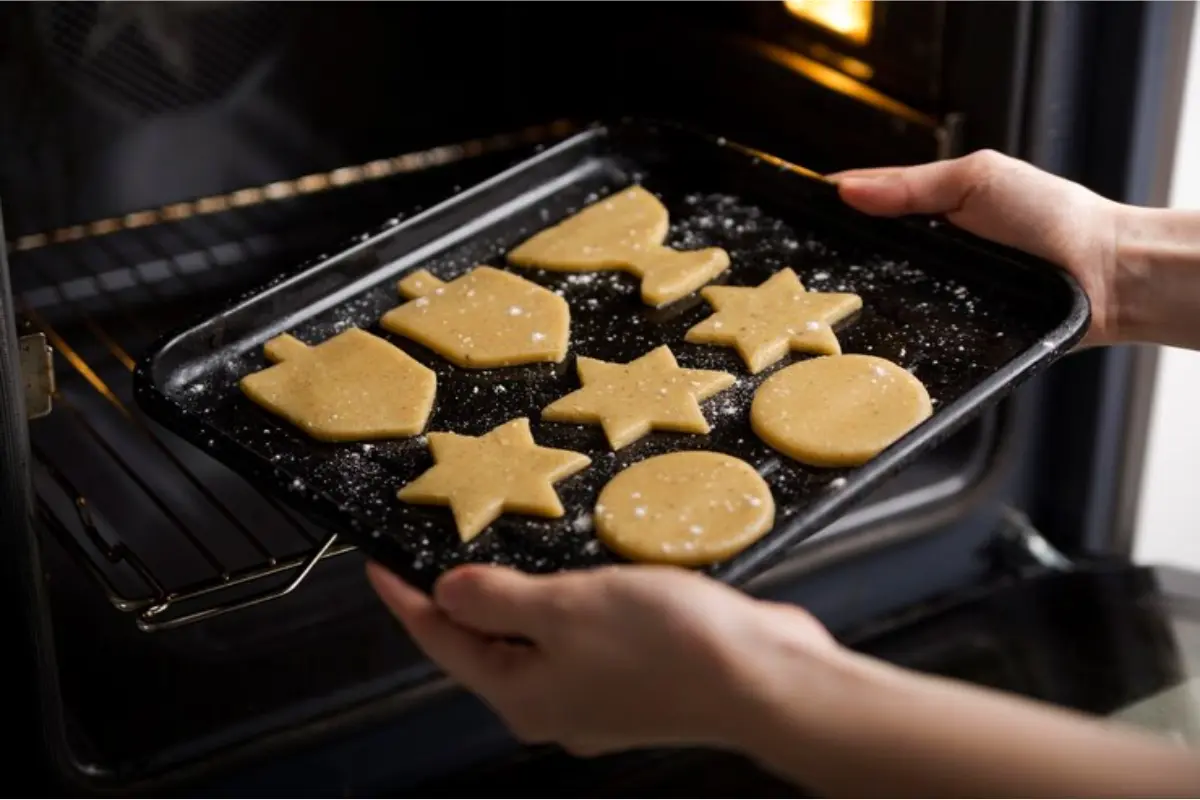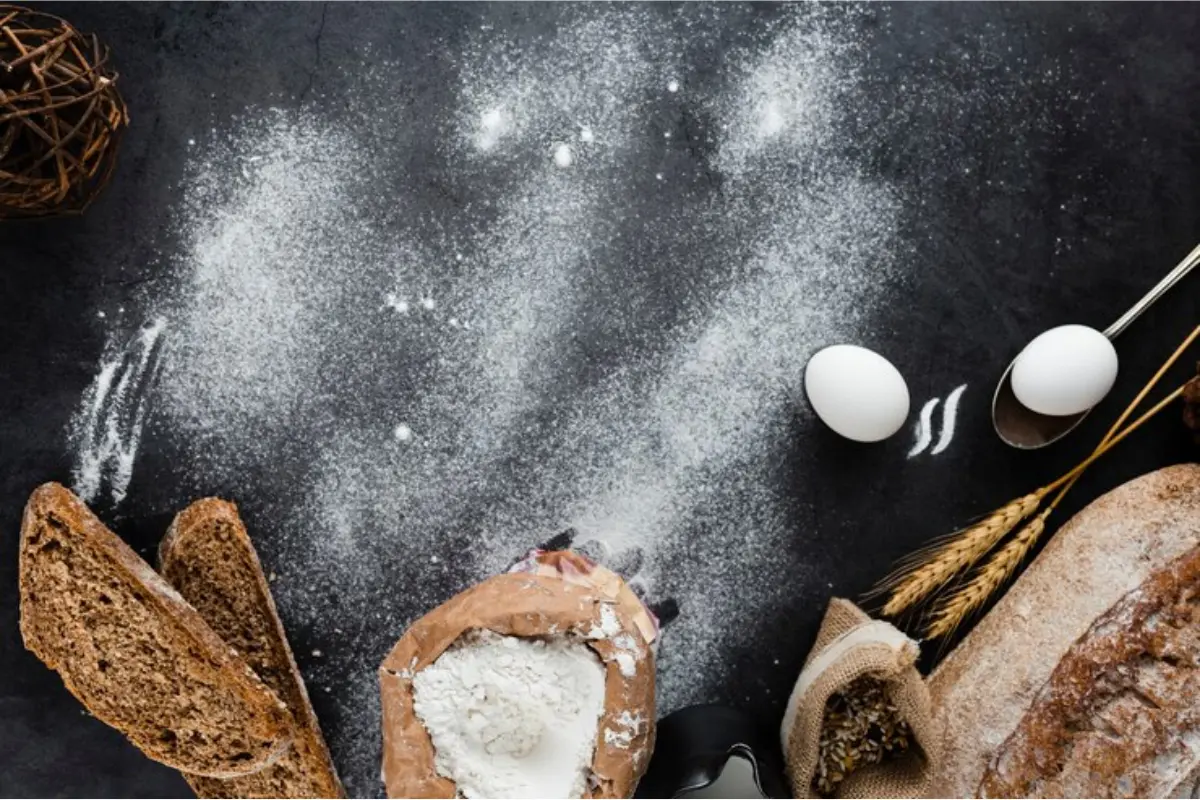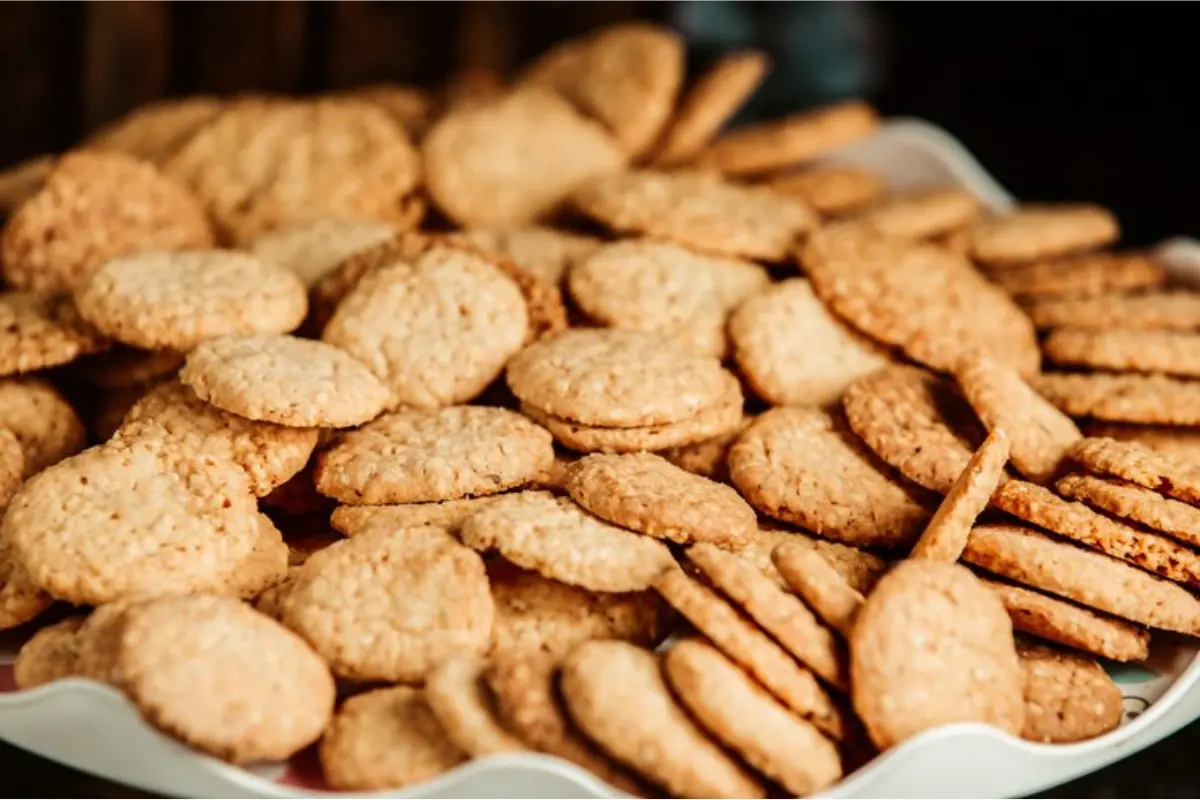Embarking on the journey of gluten-free baking can often feel like navigating through a maze with no clear exit. The quest for the perfect rise in gluten-free biscuits seems to be a common stumbling block for many. But fear not! This article is your compass, guiding you through the intricacies of gluten-free baking, ensuring your biscuits are not just edible, but delightfully fluffy and delicious. From understanding the role of gluten in traditional baking to mastering the art of gluten-free alternatives, we’ll explore every nook and cranny to help your biscuits reach new heights.

Overview of Gluten-Free Baking Challenges
Gluten-free baking is a whole different ball game compared to its gluten-containing counterpart. The absence of gluten, a key protein found in wheat, barley, and rye, means that traditional baking rules don’t always apply. Let’s dive into why gluten-free biscuits might struggle to rise and how we can tackle these challenges head-on.
Understanding Gluten’s Role in Biscuit Texture
In traditional baking, gluten is the MVP. It gives dough its elasticity and helps trap air bubbles, leading to that sought-after rise. Without it, our gluten-free biscuits might end up as flat as a pancake. But, here’s the kicker: with the right mix of ingredients and techniques, we can mimic gluten’s effects and achieve the perfect rise.
Common Pitfalls in Gluten-Free Biscuit Recipes
One of the main culprits behind lackluster gluten-free biscuits is the flour blend. Not all gluten-free flours are created equal, and some are denser and thirstier than others. It’s like expecting a cactus to thrive in a rainforest; you’ve got to match the ingredient to the environment. Additionally, leavening agents such as baking powder and baking soda need to be used more strategically in gluten-free baking. It’s not just about adding more; it’s about finding the perfect balance.
By understanding these challenges and learning how to navigate them, we’re one step closer to gluten-free biscuit perfection. Stay tuned as we delve deeper into the world of gluten-free baking, uncovering the secrets to a flawless rise and texture.
Key Factors Affecting the Rise of Gluten-Free Biscuits

When it comes to gluten-free baking, a few key factors can make or break the rise of your biscuits. Let’s roll up our sleeves and tackle these head-on, ensuring your next batch reaches for the skies.
Ingredient Selection
Choosing the right ingredients is crucial in the quest for fluffy gluten-free biscuits. It’s not just about swapping out wheat flour for a gluten-free alternative; it’s about understanding how each ingredient contributes to the final product.
Importance of Gluten-Free Flour Blends
Not all gluten-free flours are equal. Some might leave your biscuits denser than a brick, while others can make them light and airy. The trick lies in finding the right blend. A mix of rice flour, tapioca starch, and potato starch often hits the mark, mimicking the properties of gluten and giving your biscuits that much-needed lift.
Role of Leavening Agents: Baking Powder vs. Baking Soda
Leavening agents are the secret agents of baking, working behind the scenes to give your biscuits their rise. But beware, using them in gluten-free baking is not as straightforward as it seems. Baking powder, for instance, can provide a slow, steady rise, while baking soda, when paired with an acid like buttermilk, can add an extra oomph. The key is to experiment and find the perfect balance for your recipe.
Technique Adjustments
Now, let’s talk technique. Even with the best ingredients, your biscuits might still fall flat if you don’t get your hands dirty with the right methods.
Mixing Methods for Gluten-Free Dough
Overmixing is often the downfall of many gluten-free baked goods. Unlike traditional doughs, gluten-free versions don’t benefit from extensive kneading. Instead, a gentle touch and minimal mixing will do the trick, ensuring your biscuits stay light and tender.
The Impact of Oven Temperature and Baking Time
Finally, don’t overlook the power of the oven. A consistent, accurate temperature can make a world of difference. Too low, and your biscuits won’t rise properly; too high, and they might become golden on the outside but remain uncooked within. And remember, gluten-free baked goods often require a slightly longer baking time, so patience is key.
By paying close attention to these factors, you’re well on your way to mastering the art of gluten-free biscuit baking. With the right ingredients and techniques, you’ll soon be enjoying biscuits that rise beautifully, no gluten required. Stay tuned as we delve even deeper into the secrets of gluten-free baking success.
Advanced Tips for Perfect Gluten-Free Biscuits

Now that we’ve covered the basics, let’s elevate our gluten-free biscuit game with some advanced tips. These nuggets of wisdom will help you navigate the finicky world of gluten-free baking, ensuring your biscuits are not just good, but great.
Hydration and Fat Content
The right balance of moisture and fat can make a world of difference in your biscuits. It’s like finding the perfect rhythm in a dance, where every step and turn syncs harmoniously.
Balancing Moisture for Fluffy Biscuits
Gluten-free flours tend to be thirstier than their wheat counterparts. They soak up liquids like a sponge, which can lead to dry, crumbly biscuits if you’re not careful. The solution? Adjust your liquid ratios. Adding a touch more milk or water than your recipe calls for can keep your dough at the perfect hydration level, leading to biscuits that are moist and tender.
Choosing the Right Fats for Richness and Texture
Fats are not just about adding flavor; they also contribute to the tender, flaky texture we all love in biscuits. But here’s the catch: not all fats are created equal. Butter, for instance, adds unparalleled richness, but it can be tricky to work with. Shortening, on the other hand, is more forgiving and can help achieve that desirable flakiness. The trick is to experiment and find the fat that works best for your recipe and taste preferences.
Alternative Ingredients
Sometimes, the secret to perfect gluten-free biscuits lies in the most unexpected ingredients. These game-changers can revolutionize your baking, taking it from good to extraordinary.
Using Buttermilk and Acidic Additives for Leavening
Buttermilk isn’t just for pancakes. Its acidity can work wonders in gluten-free biscuit recipes, reacting with baking soda to create a beautiful rise. And don’t forget about other acidic friends like lemon juice or vinegar. A small splash can activate your leavening agents, giving your biscuits that extra lift.
The Role of Binders: Xanthan Gum, Psyllium Husk, and Collagen
In the absence of gluten, binders become the glue that holds your biscuits together. Xanthan gum is a popular choice, but psyllium husk and collagen are also worth considering. They not only improve the texture but can also add nutritional benefits to your baked goods. It’s like hitting two birds with one stone!
By incorporating these advanced tips into your gluten-free baking repertoire, you’ll be well on your way to creating biscuits that rise beautifully and taste delicious. Remember, the key to success lies in experimentation and patience. So, don your apron, preheat your oven, and get ready to bake the best gluten-free biscuits you’ve ever tasted.
Troubleshooting Common Issues

Even with the best intentions and careful preparation, sometimes our gluten-free biscuits don’t turn out as we’d hoped. But don’t throw in the towel just yet! Let’s troubleshoot some common issues and get those biscuits rising to the occasion.
Dense and Hard Biscuits
It’s a common tale: you follow the recipe to the letter, only to end up with biscuits that could double as hockey pucks. Frustrating, right? But there’s hope!
Adjusting Flour Types and Ratios
The type and ratio of gluten-free flours can significantly impact your biscuit’s texture. If your biscuits are coming out too dense, consider lightening the mix with a higher proportion of starches, like cornstarch or tapioca flour. These lighter flours can introduce more airiness into your dough, leading to a softer biscuit.
The Importance of Resting and Chilling Dough
Sometimes, the secret to light and fluffy biscuits lies in the wait. Allowing your dough to rest can give the flours time to hydrate fully, which can improve the texture of your biscuits. Chilling the dough before baking can also help, as it solidifies the fats, leading to a flakier texture when baked.
Undercooked and Gummy Centers
There’s nothing more disappointing than breaking open a beautiful biscuit, only to find a gummy, undercooked center. But with a few tweaks, you can ensure your biscuits are cooked perfectly through.
Testing for Doneness: Tips and Tricks
Invest in a reliable oven thermometer to ensure your oven is at the right temperature, as undercooking is often due to temperature discrepancies. Additionally, consider using a toothpick or cake tester to check the doneness of your biscuits. If it comes out clean, your biscuits are ready to come out of the oven.
Adjusting Thickness and Size for Even Baking
Thick biscuits might look impressive, but they can be tricky to bake evenly. Try rolling your dough to a uniform thickness, ensuring that the middle isn’t too thick compared to the edges. Smaller biscuits can also bake more evenly, so consider using a smaller cutter if you’re consistently finding gummy centers.
By addressing these common issues head-on, you’ll be well-equipped to bake gluten-free biscuits that are just as good, if not better, than their gluten-containing counterparts. Remember, every batch is an opportunity to learn and improve, so keep experimenting and adjusting until you find your perfect biscuit recipe.
FAQs
In the world of gluten-free baking, questions abound. Let’s tackle some of the most common queries head-on, ensuring you’re armed with the knowledge to bake the perfect gluten-free biscuits.
Why do my gluten-free biscuits not rise as much as traditional ones?
The absence of gluten, which provides elasticity and traps air, is the main culprit here. But don’t despair! By optimizing your blend of gluten-free flours and leavening agents, you can achieve a desirable rise. Remember, gluten-free baking is more of an art than a science, requiring a bit of experimentation to get just right.
Can I substitute gluten-free flour 1:1 in biscuit recipes?
While it’s tempting to swap out wheat flour for gluten-free flour cup for cup, this approach often leads to less-than-stellar results. Gluten-free flours have different properties and absorbency levels, so adjustments are usually necessary. Look for recipes specifically designed for gluten-free flour or be prepared to tweak the liquid and leavening agent ratios.
How can I make my gluten-free biscuits fluffier?
Fluffy biscuits are the holy grail of gluten-free baking. To achieve this, focus on the leavening agents. A combination of baking powder and baking soda, especially when paired with an acidic ingredient like buttermilk, can introduce more air into your dough. Also, don’t overlook the importance of the right fat and its incorporation method, as this can significantly affect the texture.
Why are my gluten-free biscuits so dense?
Dense biscuits often result from heavy gluten-free flour blends or insufficient leavening. To combat this, consider using a lighter flour blend or adding a bit more leavening agent. Also, ensure you’re not overworking the dough, as this can lead to denser biscuits. Gentle handling and minimal mixing are key.
By addressing these frequently asked questions, you’re well on your way to becoming a gluten-free biscuit master. With each batch, you’ll gain more insight and experience, bringing you ever closer to the perfect biscuit. Remember, persistence and patience are your best friends in the gluten-free baking journey.
Conclusion
As we wrap up our journey through the world of gluten-free biscuit baking, it’s clear that the path to perfect biscuits is both an art and a science. From understanding the unique challenges of gluten-free flours to mastering the balance of ingredients and techniques, every step is an opportunity to learn and grow.
Summarizing Key Takeaways for Successful Gluten-Free Biscuits
Remember, the key to fluffy, delicious gluten-free biscuits lies in the careful selection of flours, the strategic use of leavening agents, and the mastery of baking techniques. Don’t shy away from experimenting with different flour blends, fats, and binders like xanthan gum or psyllium husk. Each variation brings you closer to discovering what works best for your taste and texture preferences.
Encouragement to Experiment and Personalize Recipes
The beauty of baking lies in its endless possibilities. Each batch of biscuits is a blank canvas, inviting you to tweak and adjust until you achieve your desired outcome. Embrace the process, celebrate the successes, and learn from the less-than-perfect attempts. With patience and practice, you’ll find that gluten-free biscuit baking is not only achievable but immensely rewarding.
As you continue on your gluten-free baking journey, remember that every baker, novice or experienced, faces challenges along the way. But it’s through these challenges that we grow and improve. So, preheat your oven, gather your ingredients, and get ready to bake the best gluten-free biscuits you’ve ever tasted. The perfect rise is within reach, and with each batch, you’re one step closer to gluten-free baking mastery.
